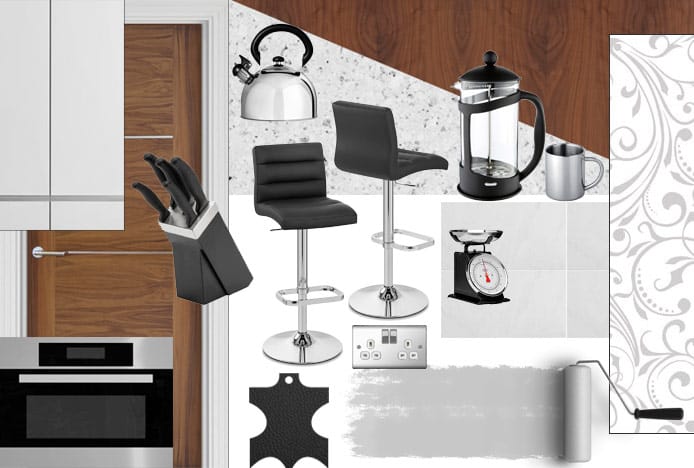How To Plan Your Room With A Mood Board
By Sophie Hardy, 31st March, 2016
Sometimes, the hardest part of decorating is getting started. We all have an image in our head of how we want a room to look, but trying to recreate that image in the home can be a daunting task. This post will discuss how making a mood board can kick-start the process.
Before decorating a room, it helps to piece together all of your ideas and form an image that conveys the overall look you want, this can be done by creating a mood board. It’s a great way to visually communicate and organise your initial design ideas and experiment with different ones. It can also become a team effort, allowing you and whomever you are decorating with to bring individual tastes and concepts to the table.
Preventing costly mistakes, a mood board helps you decide what does and doesn’t work before splashing out on expensive materials. As a portable representation of your ideal room, not only can you take it with you when shopping for extra pieces for the room, you can also see how your chosen paint colours and fabrics look under different lighting or next to existing features.

Getting Started
You can find ideas in interior design magazines and websites, or take a look around you when you’re out and about, you may find plenty of inspiration from textures and patterns in fashion or even nature.
Collect images of rooms and styles you like, these could be printed from a website, cut out of magazines, or take your own photos of interiors that catch your eye. You can then look for common themes and features in these images to use when decorating your own home.

Gather swatches for each element of the room, this includes paint colours and wallpaper, carpet or tiling samples, curtain materials, and even seat fabrics. If you like the look of one of our dining chairs but aren’t sure if it will match your décor, we can send a fabric swatch to you. Or if you prefer, bring your mood board into our showroom and compare it with a variety of chairs and bar stools to find the best match.

Will you be creating a physical or digital mood board? Make a physical board with a large piece of card or use a corkboard to easily pin down ideas. This is great for trying out specific combinations; for example, you can see how particular wallpaper will look against your seat fabric.
If you prefer to use a computer, get creative with the likes of Photoshop to compile images you find online. There are also many online platforms that are quick and easy to use. Pinterest allows you to create numerous boards, you could create one for every room of the house, and fill each one with inspiration and images that appeal to you. Check out our Pinterest for some examples.

Layout
When arranging your board, position your images, samples, and swatches, as you would see them in the room. For example, place carpet or tile samples at the bottom, and pair features that will sit next to each other, such as curtain fabric next to paint samples. You will discover items that complement each other and items that clash. This will enable you to visualise the room as a whole, and you may find it helpful to sketch the layout of the space first.
Consider the size of each swatch you use, what will take up the most visual space in the room? Generally, you should use bigger samples for flooring and walls; this will give you an idea of how the ratio of colours and materials will work when put in place.
If you are undecided on the style you want to go for, creating another mood board for a different colour scheme or theme can help you find a solution. You could also use text or keywords, such as ‘vintage’ or ‘luxurious’, as a reminder of the theme and atmosphere you want to create.
Your preferences are likely to change as you begin to position everything, so if you are creating a physical board, make sure you use temporary fixings such as pins, paperclips, and masking tape, to easily remove and rearrange.

Make as many different combinations as you like until you reach the look you want. Once you are happy with it, you can begin decorating safe in the knowledge that you have tried and tested the design.
Recommended Articles
Designing a Home for the Whole Family
Create a stylish and practical home for you, your family, and your pets to enjoy..
How To Light A Bar, Kitchen & Dining Room
Discover how to create a successful lighting scheme in your kitchen or dining room..
Back to School Time
With the end of the holidays looming, prepare for a year of study with our tips..
How to Create a Cosy Corner in Your Home
Staying in is the new going out! Pop the kettle on and relax in a cosy corner..
Recent Popular Posts
3 Easy Steps to Scandinavian Style in Your Home
Featuring natural materials, clean lines and light spaces, Scandi style is clean and cosy..
6 Ways to Use Texture in Your Kitchen
Six easy ways that you can use texture to liven up your kitchen design..
How to Brighten up a Dark Kitchen
Whether your kitchen's a small space, or just poorly lit, brighten it up in 5 steps..
How to Create a Cosy Corner in Your Home
Staying in is the new going out! Pop the kettle on and relax in a cosy corner..



















